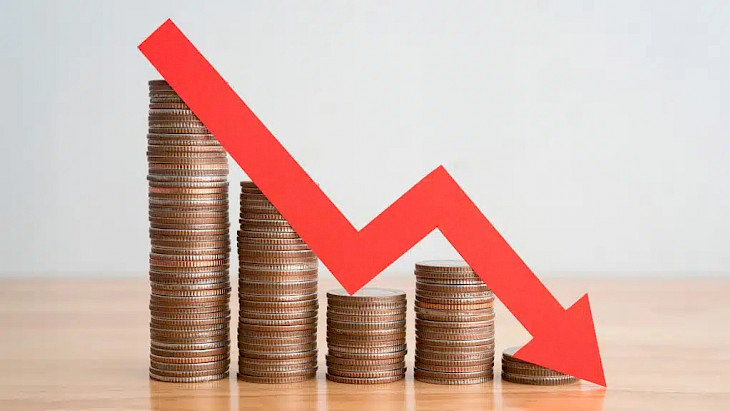Net inflow of foreign direct investment (FDI) into Kazakhstan's economy in January-September 2024 decreased 32.3 times compared to the same period in 2023, dropping from $2.3 billion to $72.9 million, according to statistics from the National Bank of Kazakhstan, Kursiv.kz reports.
These figures mark the lowest level in the history of the regulator’s data publication (since 2005). Economist Galymzhan Aitkazin was the first to highlight the situation.
According to the IMF’s definition, FDI implies an investor's control over the recipient company in another country. In addition to foreign participation in company capital, the National Bank of Kazakhstan also considers reinvested earnings and debt instruments.
For the entire year 2023, net FDI inflow nearly halved compared to the previous year, reaching $3.4 billion. The highest level of direct investment was recorded in 2008 at $14.3 billion, while the lowest (excluding 2024) was in 2005, at $2 billion.
Since 2023, Russia has been the leading FDI source for Kazakhstan. Net inflow from Russia totaled $931.9 million in the first half of last year (more recent data is not yet available). However, compared to January-June 2023, Russian FDI inflow decreased by 21.4%. The top five FDI sources last year also included Singapore, Luxembourg, Switzerland, and Cyprus. The largest investments were directed toward wholesale and retail trade, financial and insurance activities, and manufacturing.
The largest capital outflows from Kazakhstan in January-June 2024 (net FDI outflows) were directed to:
- United Kingdom – $1 billion
- United States – $353 million
- China – $244 million
- France – $148 million
Aitkazin notes that this occurs through capital repatriation (investment returns), loan repayments to foreign parent companies, and profit or dividend withdrawals.
Kazakhstan’s net outward direct investment in the first nine months of 2024 reached $1.5 billion, compared to $701.5 million of net inflows in the same period of 2023. The net FDI position (outward direct investment minus inward investment) stood at minus $1.6 billion, compared to minus $3.2 billion in 2023.
“The net FDI position is a complete disaster. On one hand, capital outflows and declining investment in resource sectors are due to the completion of major projects, with no new ones on the horizon. On the other hand, uncertainty in the investment climate and business environment is being influenced by the ongoing revision of the Tax Code and increased regulatory pressure from the state on large foreign businesses,” Aitkazin explains.
The gross FDI inflow for the first three quarters of 2024 amounted to $12.7 billion, reflecting a 35.7% year-on-year decline. However, by the end of 2023, Kazakhstan ranked sixth in the global Macroeconomic Development and FDI Attraction Index, according to the IMF and FDI Intelligence.
This figure, however, only reflects investor interest in Kazakhstan’s economy without accounting for capital outflows, Aitkazin notes. In 2018, former President Nursultan Nazarbayev set a goal to increase gross FDI inflow to $30 billion by 2025. The highest recorded gross FDI inflow was in 2012 at $28.8 billion, while the lowest was in 2015, at $15.4 billion.
In August 2023, analysts at the National Bank of Kazakhstan concluded that the government was using an incorrect metric to assess FDI attraction effectiveness. The regulator pointed out that it fails to account for capital outflows, yet consistently presents positive results. National Bank representatives emphasized that gross FDI inflow data alone is insufficient to understand the true investment flow picture.
CentralasianLIGHT.org
January 9, 2025

